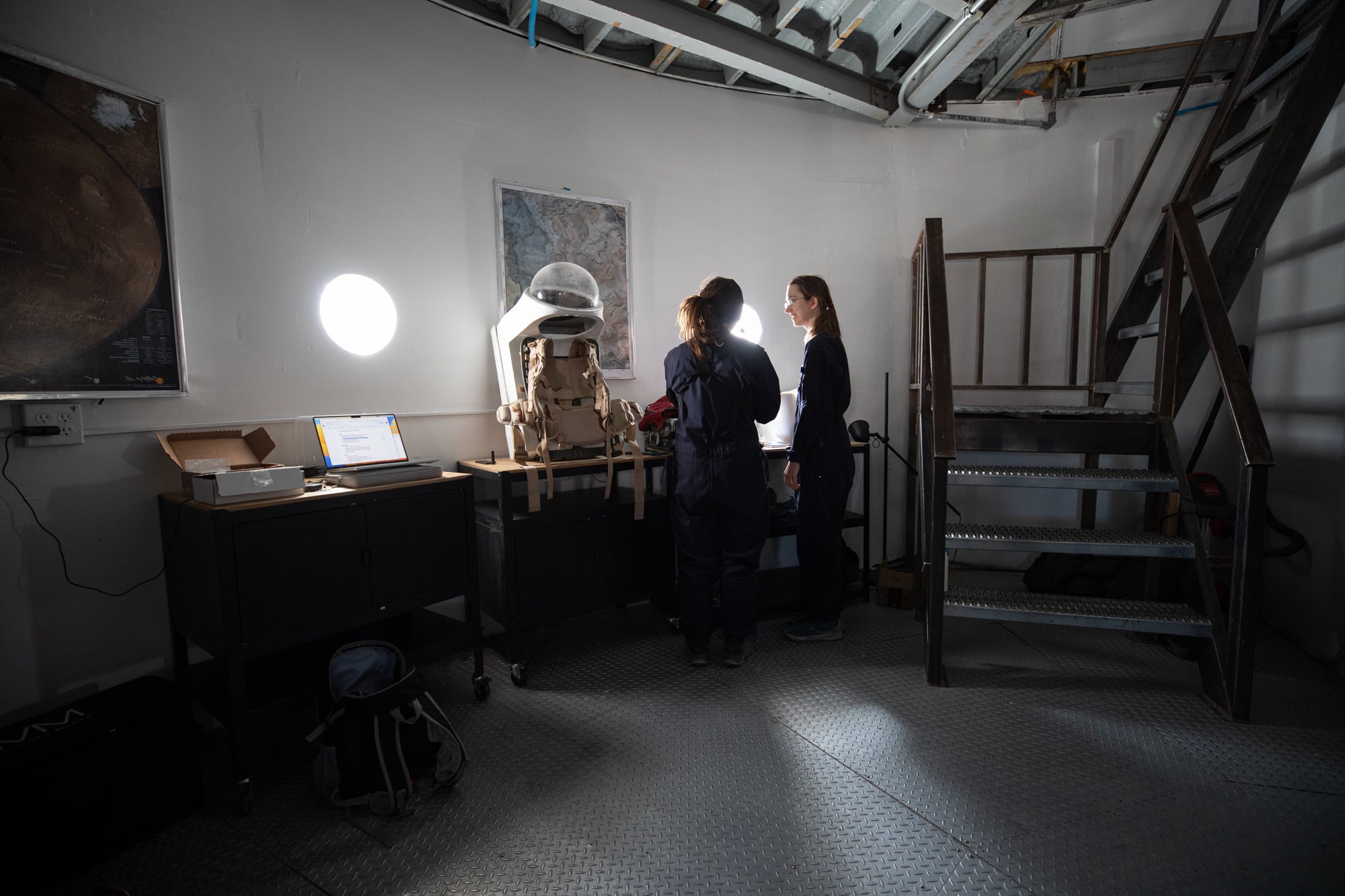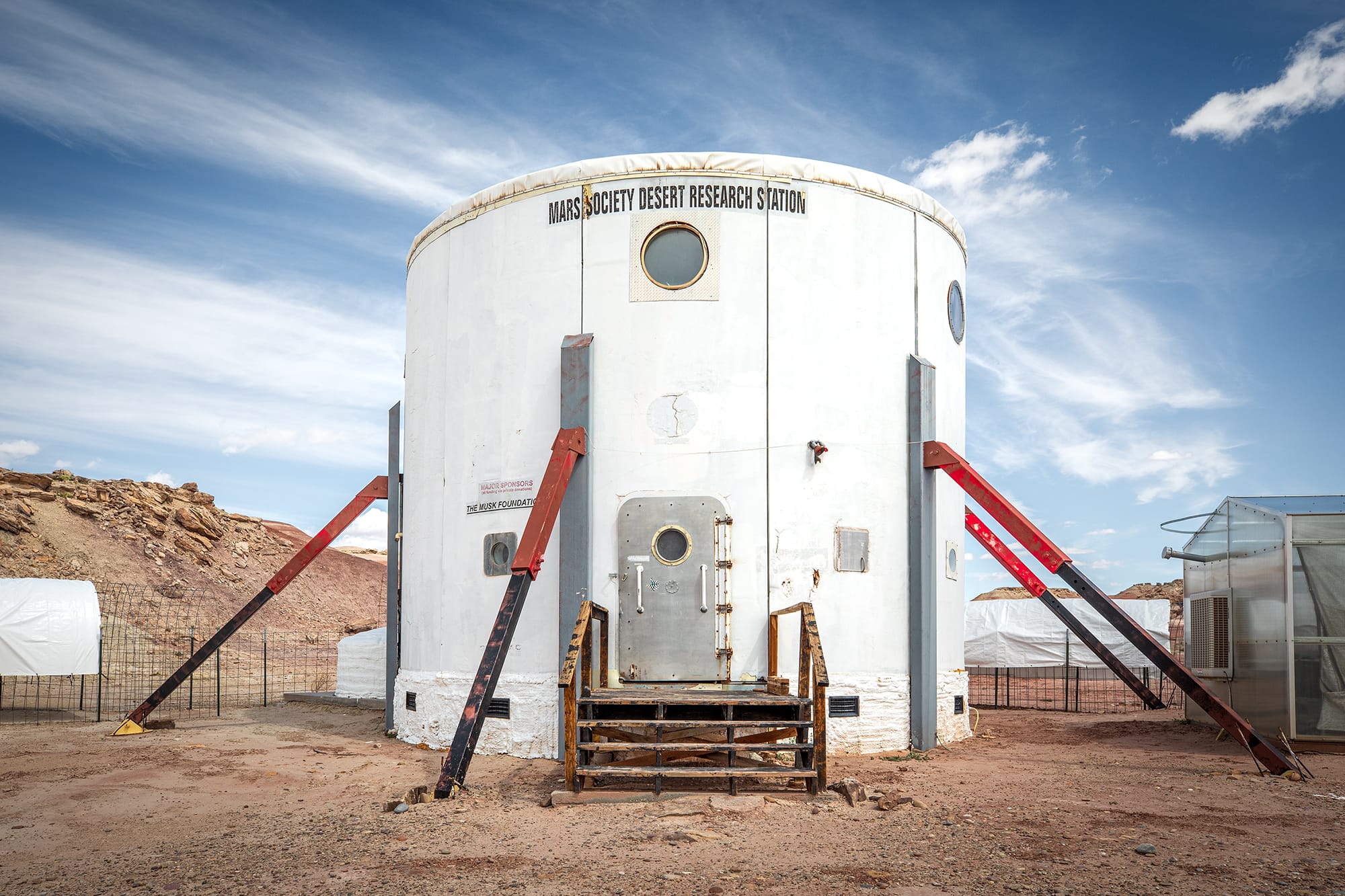While planning my first trip to the US in seven years and plotting a route on google maps, I discovered The Mars Desert Research Station (MDRS) in Southern Utah. And so what was meant to be a leisurely road trip, turned quickly into a more project focused journey.
MDRS is run by the Mars Society who I contacted in order to document the day to day activities of the current crew. Crews consist of 7 or 8 members with various science or engineering backgrounds. Crews stay for an average of two-weeks during which they conduct research and experiments in a simulated analogue Mars mission at the station outside Hanksville, Utah.
My visit was scheduled for the later part of my journey and to get into the mood I visited Biosphere 2, outside Tucson, Arizona. Biosphere 2 was developed as the second fully self-sufficient biosphere, after Earth itself (Biosphere 1). As an attempt to create a balanced and self-sustaining replica of Earth’s ecosystems, Biosphere 2 was a miserable (and expensive) failure. In short, the experiment failed to generate sufficient breathable air, drinkable water and adequate food for just eight humans. On my way out, I spotted the swallow perched on an emergency call box, seemingly wanting to alert to it’s plight on Biosphere 1.
Three days later at 8am I drove out of Hanksville, turned onto a dirt track at marker 113 and followed it until being flagged down by Kris Davidson, the Crew Journalist. Kris had come out of analogue simulation to greet and direct me. Soon after I met the rest of the crew and was shown around the station.
At the time Erin Kennedy (Canada), a young robotics engineer and Audrey Derobertmasure (France), acting medical officer were preparing to leave the station to test Erin’s wind-powered rover, Atmosphinder.
There is a strict protocol to be adhered to when leaving the station, which was exited via an airlock in which crew members had to acclimatize for about 5 minutes before stepping outside.
The images presented here were taken during these preparations and as we drifted through the Martian landscape outside, seeking a suitable location to test the wind driven rover.



















